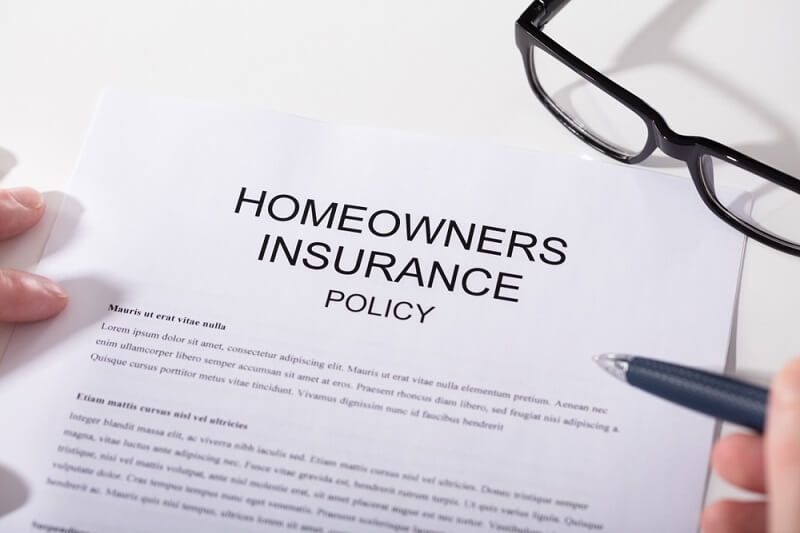
When you purchase a home, one of the wisest money moves you can make is to invest in homeowners' insurance. However, figuring out just what your policy covers can be confusing. This handbook provides homeowners' insurance explained in depth—shedding light on confusion regarding home coverage specifics, fire and theft protection, natural disaster insurance, and providing sensible home safeguarding advice.
Let's take a closer look at what you can look forward to with your policy—and what gaps could leave you exposed.
A home is more than just somewhere to live—it's probably your most valuable asset. Insuring it with homeowners' insurance isn't only smart, it's often necessary for mortgage lenders. In addition to that, it gives you peace of mind. If disaster were to strike, you'll want to know that your investment—and the stability of your family—is safeguarded.
But having a policy is not sufficient. You must know what it actually covers, and as importantly, what it does not.
Most basic homeowners insurance policies are constructed upon a handful of fundamental coverage categories. Let's dissect them:
This includes the building of your house—the roof, walls, floors, and built-in appliances. If your home is damaged by covered losses such as fire, windstorms, or vandalism, your insurance will usually cover repairs or rebuilding.
Consider detached garages, sheds, fences—anything on your property not attached to your house. These are typically covered up to 10% of your dwelling limit.
This covers your possessions: furniture, clothes, electronics, and the like. If a covered risk such as fire or theft happens, your policy will compensate you for the actual value of the stolen or destroyed item.
If a visitor gets hurt on your premises or you negligently damage another's property, liability insurance will cover your legal fees, settlements, and hospital bills.
If your house is rendered uninhabitable by a covered loss, ALE can pay for hotel rooms, restaurant expenses, and other incidental costs of temporary housing.
These are the core elements, but depending on your location, you may need added protection—particularly for natural disasters.
Most homeowners believe their policy completely insures them against fire and theft insurance claims. But here's what you need to know:
Fire is usually a covered loss in nearly all typical homeowners policies. This means damage resulting from wildfires, kitchen fires, or electrical malfunctions. Yet, if the fire resulted from gross neglect or arson, your claim will not be paid.
If someone breaks into your home and steals your belongings, your policy can reimburse you—up to a certain limit. High-value items like jewelry, art, or collectibles may require additional riders or endorsements to be fully covered.
One of the most useful home protection tips is to maintain a detailed inventory of your belongings. Document with photos, receipts, and serial numbers to simplify your claim process.
Most homeowners are unaware that natural disaster coverage does not come with standard policies. Let's make it clear:
What's Typically Covered:
If you reside in an area prone to floods or earthquakes, you might need additional policies. Flood insurance is provided by FEMA and private insurers, and earthquake insurance comes as a rider or independent policy in most states.
Example:
If your basement is flooded following a heavy rain, your regular policy won't be of any assistance unless you bought additional flood insurance.

It's just as crucial to know what is not covered. Some typical exclusions follow:
Your home policy won't cover repairing things that wear out from day-to-day use. Take the case of your heating, ventilation, and air conditioning system, which has failed after 15 years. That's your headache.
Poorly maintained or neglected problems might not be paid for. If you didn't fix missing shingles and your roof leaks, don't expect a payout.
Pests, rodents, and insects are excluded under most policies, even though damage can be severe.
If you or a household member deliberately cause the damage, your policy won't cover it. That means arson, vandalism, or any attempted fraudulent claim.
Such items as fine jewelry, artwork, and collectibles tend to need riders to be comprehensively covered.
Though you can't always prevent natural disasters, you can minimize risk and even save money on your insurance. Here are wise home protection measures each homeowner must adopt:
No two houses—or homeowners—are identical. Therefore, selecting the right insurance for property requires looking at your scenario.
Considerations:
Having a consultation with a licensed insurance agent will help you customize a policy that meets your individual risk profile.
Occasionally, standard policies won't cut it. These are some additional coverages that may be worthwhile:
When things go wrong, knowing the claims process can make things less stressful.
Common Claims Steps:
Be sure to read the fine print in your policy so you’re not caught off guard during a crisis.
Premiums vary widely, but several factors can influence your rate:
Pro Tip:
Shop around! It may be worth comparing quotes from several carriers in order to get the best deal without having to cut back on coverage.
Review and renew your policy when:
Keeping current means you're never short.
Knowing your homeowners' insurance isn't a choice—it's a necessity. Armed with this homeowners' insurance explained, you now have the information to make smart choices. From knowing home coverage specifics and fire and theft coverage to finding gaps in natural disaster protection, this information gives you the power to protect what is important.
Prioritize reading over your policy today, implementing these tips on protecting your home, and having complete and current insurance for your property. For when catastrophe falls upon you, the last thing you want is a nasty surprise from your insurer.
This content was created by AI